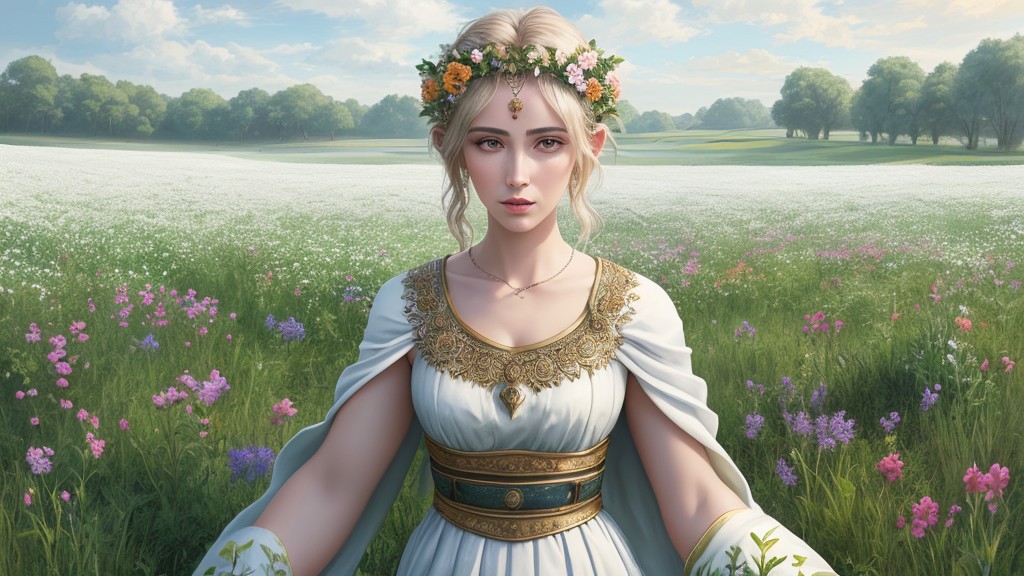
Antheia, also known as Anthea, is a figure from Greek mythology associated with spring, swamps, and flowery wreaths. She is one of the Charites, or Graces, daughters of Zeus and Eurynome. In Athenian vase paintings, she is depicted as one of the attendants of Aphrodite, the goddess of love and beauty.

The name “Antheia” is derived from the Ancient Greek word “ἄνθος,” meaning “flower” or “blossom.” She was revered in ancient times as the goddess of vegetation, gardens, and blossoms, particularly worshipped in spring and in areas with lowlands and marshlands conducive to plant growth. Antheia was also associated with human love and was worshipped on the island of Crete. In Roman mythology, Antheia was known as Anthea. Her symbols were often gold-colored items, and she was also associated with honey and myrrh. Interestingly, the name Antheia was also used as an epithet for other goddesses, including Hera and Aphrodite, highlighting her connection to fertility and growth.
Despite her association with flowers and vegetation, Antheia is not specifically identified as an Anthousai nymph in Greek mythology. However, given her domain over blossoms and her role as a fertility goddess, she shares similarities with the Anthousai, who were nymphs associated with flowers and floral growth.
Let the Anthousai guide you on a journey of self-discovery and self-care. Incorporate our skincare products dedicated to all things flowers



